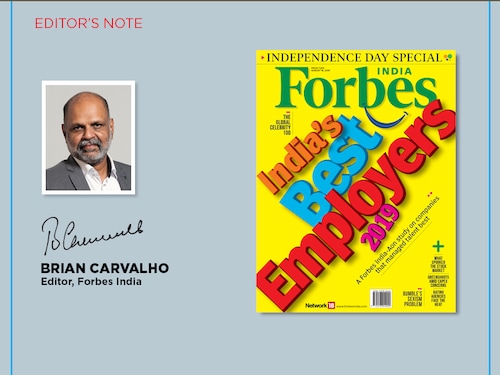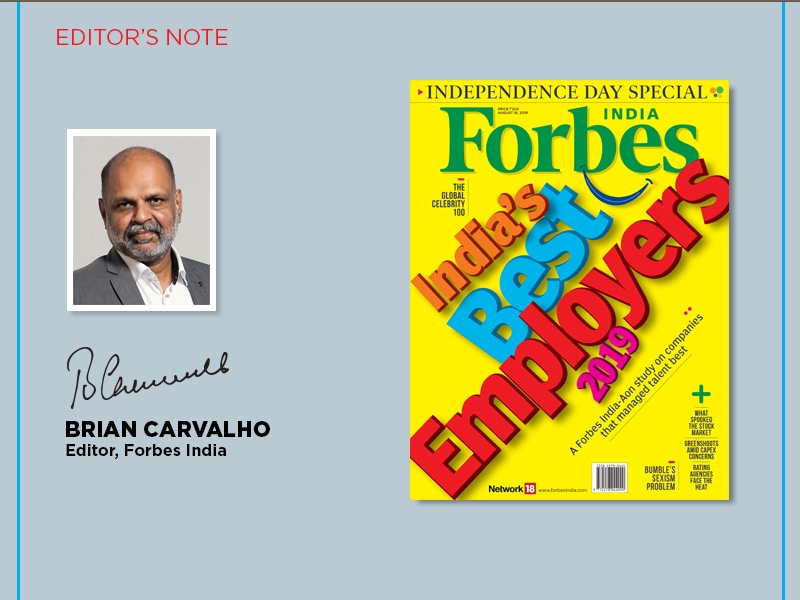Working in the free world
Today's employees are more likely to chuck up their jobs and less likely their passions.


[br]What makes a best employer? Well, it depends on the employee. Duh? It’s not as straightforward as it sounds. Most people pursue a career because they want to be successful. Which means they want to feel secure in their job which, in turn, means they want to work with a reputed corporation with a fancy designation and fancy pay, right? Not quite.
Today’s employees—most of them young and very restless—don’t care too much for job security. They’re more likely to chuck up their jobs and less likely their passions. A fancy pay check and designation won’t be frowned on, but they’re not the end. The end is a purpose. It’s up to the organisation to provide that meaningful direction to the employee. The equation works if the employees’ purpose is in sync with that of the organisation, and they are able to direct their talent and abilites towards that purpose.
The 2019 Forbes India-Aon study of India’s Best Employers is about companies that have realised that, as the wise man said, culture eats strategy for breakfast. And purpose is one key element of that culture. Read our cover package that begins from page 25 for the other ingredients in the recipe for people management excellence. Most of our winners prove that good culture is good business, which is why companies that have been voted best employers more than once in the past five years have seen a 2.6x total shareholder return compared to the broader market.
The other special package in this issue is on freedom: 73 years of it. In those decades, we’ve seen India attempt to move from, to borrow from American entrepreneur and investor Peter Thiel, Zero to One—where the task after gaining Independence was to create something new (0 to 1) rather than adding more of the familiar (1 to n). To gauge how successful India as an independent nation has been in this exercise, we have divided the past seven decades into three broad phases. We have essays from two of the best minds in economic and business writing: R Jagannathan (a former editor of Forbes India) on the first phase of nation-and institution-building (1950s-1970s), and RN Bhaskar on the 80s that were both transformative and a period of lost opportunities. The first three decades had the government’s vice-like grip on almost all parts of the economy. “The answer to every economic problem was always the same: A greater role for the state,” writes Jagannathan. The 80s saw some more of that. Prime Minister Indira Gandhi, who had already nationalised 14 private banks by 1969, chose the same fate for six more in 1980. The justification for this was that banks had to serve the rural areas, but as Bhaskar writes: “The real reason was that the Prime Minister wanted to cut the purse strings of industrialists…”
Overdue economic reform was finally forced on India in 1991. I take stock of the last three decades, from the 90s to date: A phase in which we gained plenty but may have irrevocably lost a bit, too. The good news is that after 73 years, we may be coming close to prove Albert Camus right: That “freedom is nothing else but a chance to be better”.
Beginning with this issue, Forbes India sports a more vibrant and bold look with a fresh grid structure, typography and colour palette, thanks to the redesigning efforts of the team led by creative director Anjan Das. I hope it makes reading Forbes India more of a pleasure.
Best,
Brian Carvalho
Editor, Forbes India
Email:Brian.Carvalho@nw18.com
Twitter id:@Brianc_Ed
First Published: Aug 02, 2019, 07:35
Subscribe Now